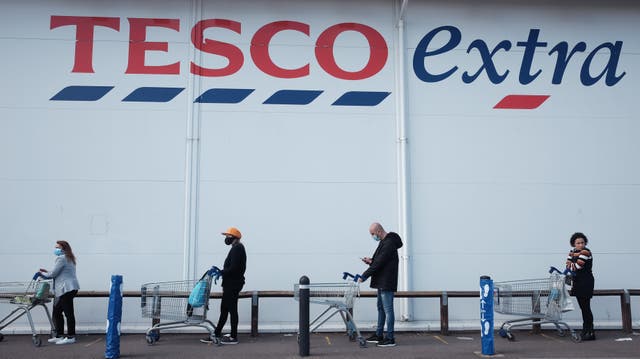
Employers who are unable to introduce adequate measures to protect staff from coronavirus should not reopen their workplaces, the Health and Safety Executive (HSE) has said.
HSE chief executive Sarah Albon said every workplace should carry out a Covid-19 risk assessment before staff return, and that the “vast majority” will be able to implement social distancing and hygiene measures.
But she told Parliament’s Work and Pensions Committee on Tuesday that employers who are unable to do so should “individually not open”.

Ms Albon said that, between March 9 and May 7, the HSE received more 7,149 coronavirus-related calls and online queries from people concerned about their safety at work.
She said that, while many of those concerns were dealt with “immediately”, about 1,400 were referred to the workplace safety regulator’s inspectors for further investigation.
In 321 cases, inspectors spoke with employers, who were required to show what safety measures they had put in place, while 27 were written to, with orders for improvements to be made.
HSE inspectors are yet to close any businesses as a result of those concerns, she added.
Later, clarifying the figures, HSE said that 4,813 of the total calls raised concerns about a workplace, with the majority being rectified after employers were contacted by the regulator.
For the remaining 2,336, HSE provided information and advice to callers, or redirected them to the appropriate agency.
Ms Albon said a further surge in calls is expected as people begin to return to work this week, with HSE increasing its call centre staff and extending its opening hours from 5pm to 10pm to cope with demand.

Meanwhile, HSE has received 3,000 reports of coronavirus-related occupational diseases, 200 reports of dangerous occurrences and 71 worker deaths submitted through its Riddor reporting system, the committee heard.
Riddor places a duty on employers to report certain serious workplace accidents.
Asked why the figure for reported worker deaths is “so low”, Ms Albon said: “We have noticed that. We think it is at least likely we have had some significant under-reporting, and that is particularly under NHS settings where we have had very, very low numbers so far reported to us.
“We are concerned we are not getting the numbers we expect and we have been taking that up with NHS at a national level and with individual health authorities, and we will pursue that.”
Asked whether it is safe for people to go back to work, Ms Albon said: “Our view is that every workplace should do a risk assessment, that the vast majority of them should be capable of implementing social distancing and appropriate hygiene and the other best lines of defence set out in the guidance.
“But if an individual employer concludes that particular issues around the way they work or their accommodation or their staff means they can’t, then they should individually not open.”
Meanwhile, John Simpson, Public Health England’s medical director for emergency resilience and response, told the committee that 0.25% of the working population is believed to have coronavirus.
Asked whether employers should carry out temperature tests for staff, Mr Simpson said that, while the measure would reassure workers, it is “probably rather ineffective” from a health perspective.

Enjoy the convenience of having The Sunday Post delivered as a digital ePaper straight to your smartphone, tablet or computer.
Subscribe for only £5.49 a month and enjoy all the benefits of the printed paper as a digital replica.
Subscribe